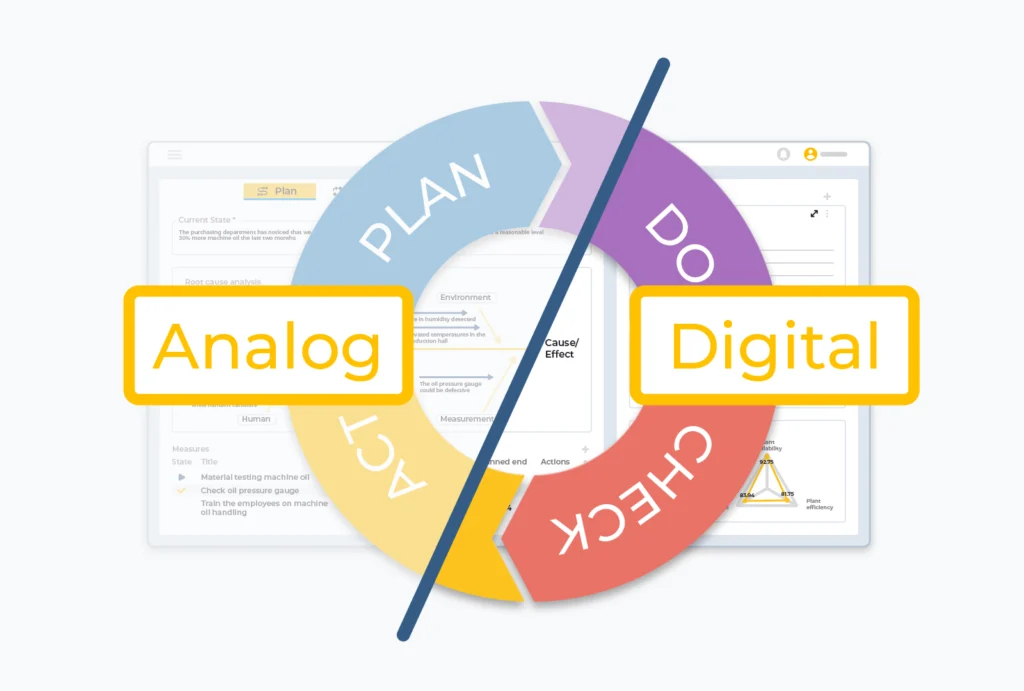A structured approach to continuous improvement is essential for efficiency in production and logistics processes. The PDCA cycle (Plan-Do-Check-Act) has established itself as an indispensable methodology in Lean Management. However, while many companies still conduct the PDCA cycle in an analog manner with paper and pen, digitalization offers significant advantages. So why should companies handle their PDCA cycles digitally?
Faster and more efficient implementation
In an increasingly fast-paced and data-driven business world, rapid response times are a crucial competitive advantage. Digitalizing the PDCA cycles allows companies to significantly enhance their efficiency and speed. Unlike the analog method, which requires manual data collection, tracking and reporting, digital tools automate these steps. Real-time data is instantly available and actions can be documented and assigned directly within the system. This significantly shortens response times and allows the entire PDCA cycle to be completed more quickly and accurately.
Efficient collaboration: Transparency throughout the entire continuous improvement process
A key advantage of the digital PDCA cycle is the increased transparency. All steps and actions are digitally recorded and accessible at any time. This ensures that all participants have constant access to relevant information, fostering team collaboration. Individuals and departments can work together on the improvement process, with responsibilities clearly assigned and progress monitored in real time. Additionally, information from completed cycles serves as a valuable reference for future projects.
Real-time data is a clear advantage when it comes to digitalizing the PDCA cycle. Instead of relying on outdated information, companies can make decisions based on current data. By continuously capturing and analyzing data from various systems, the entire process becomes more dynamic and adaptable, significantly enhancing the precision and effectiveness of actions.
Targeted implementation of improvement measures
Managing measures can often be a challenge with analog PDCA cycles. However, dedicated software provides integrated tools that systematically organize the planning, tracking, and evaluation of actions. Tasks can be assigned directly within the system, deadlines can be set and progress can be tracked in real time. This structured approach minimizes the risk of delays or misunderstandings and facilitates the successful implementation of planned improvements.
Scalability and flexibility: Meeting dynamic requirements
The high scalability and flexibility are key features of a digital system for managing PDCA cycles. While analog methods quickly become confusing for larger projects, digital management allows for easy adaptation to varying requirements. Whether dealing with a small process, such as optimizing a single production line, or a comprehensive company-wide optimization project, a digital system can be scaled and adjusted flexibly with ease.
Trend-setting: The digital PDCA cycle
For companies aiming for continuous optimization of their production and logistics processes, a digital system for managing PDCA cycles is an indispensable strategic tool. It not only enables a more efficient implementation of the continuous improvement process (CIP) but also offers the flexibility and speed that are crucial in today's dynamic business environment. In an era where competitiveness heavily depends on the ability to quickly adapt to changes, digitalizing the PDCA cycle is not just sensible but a crucial step in ensuring long-term success.


